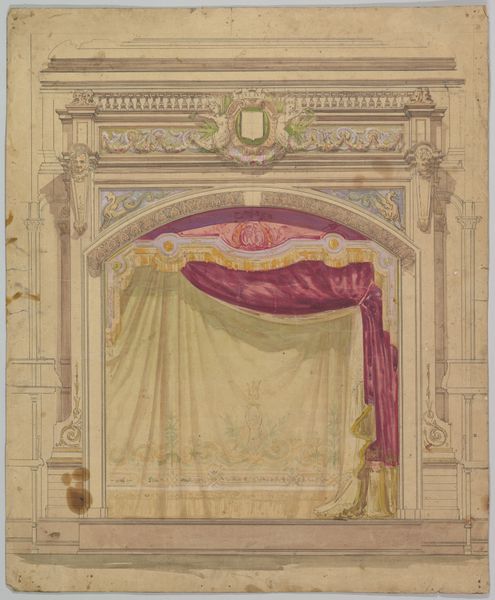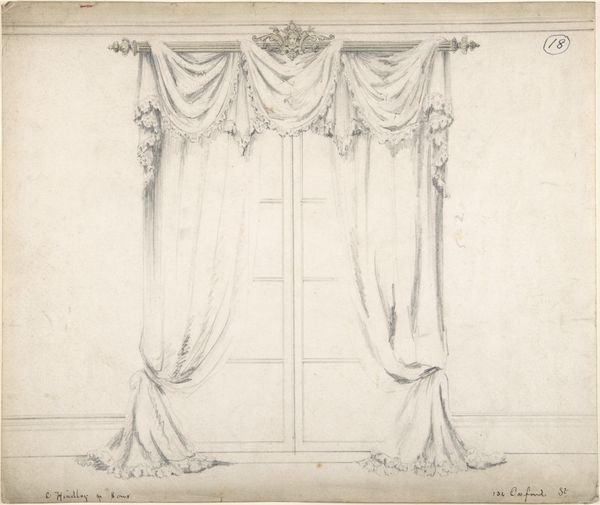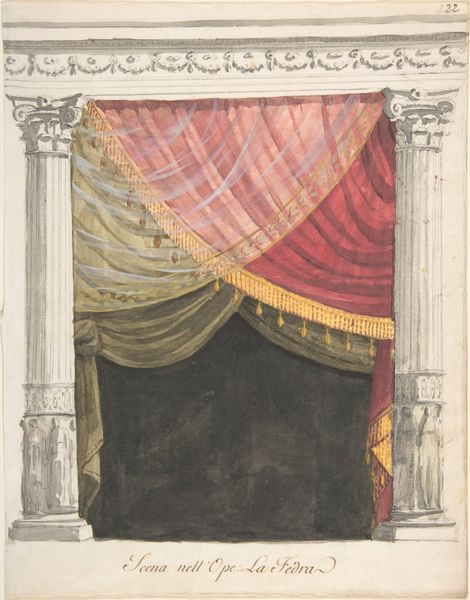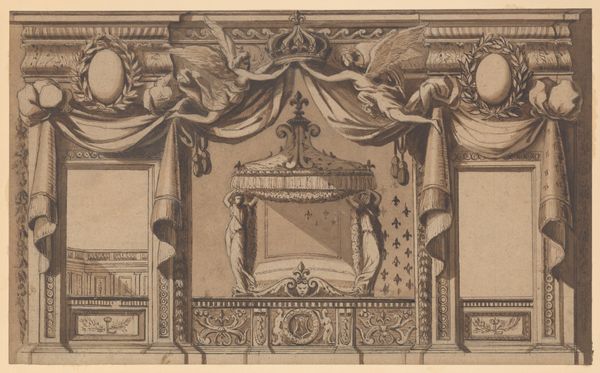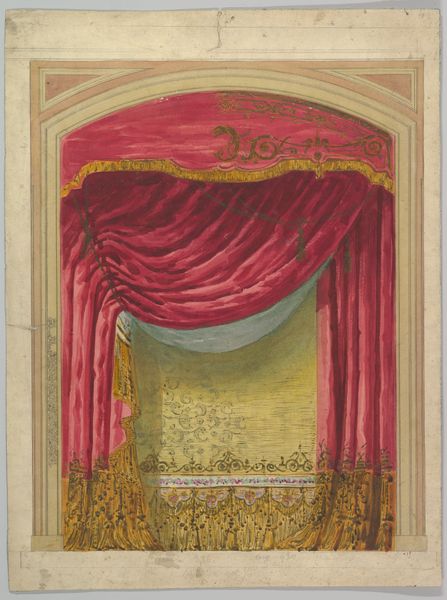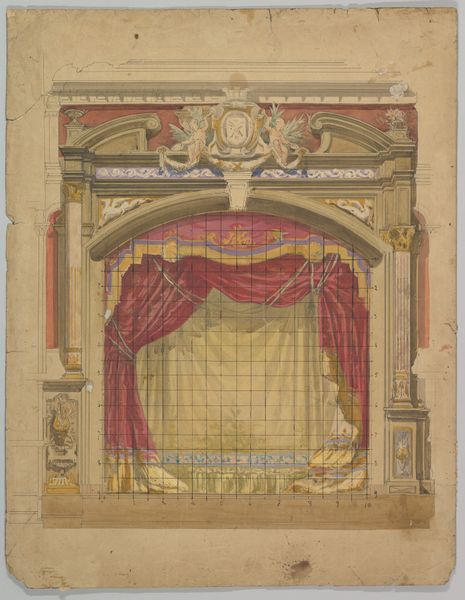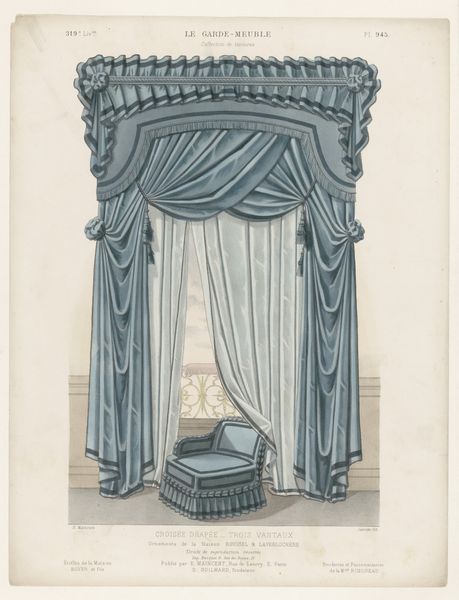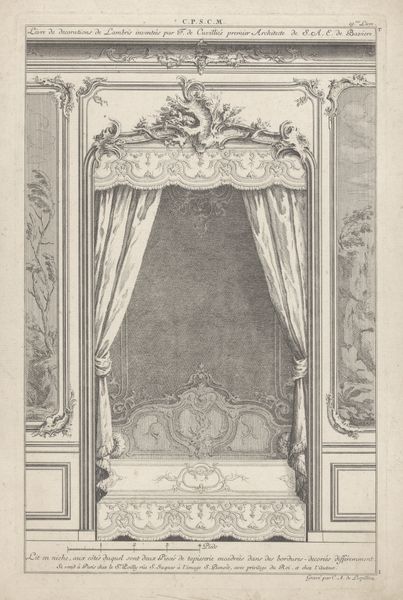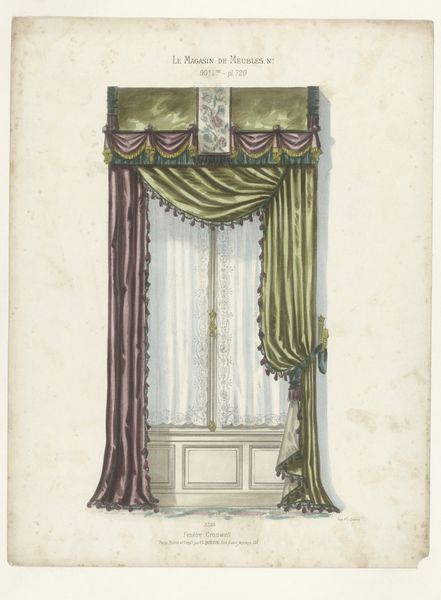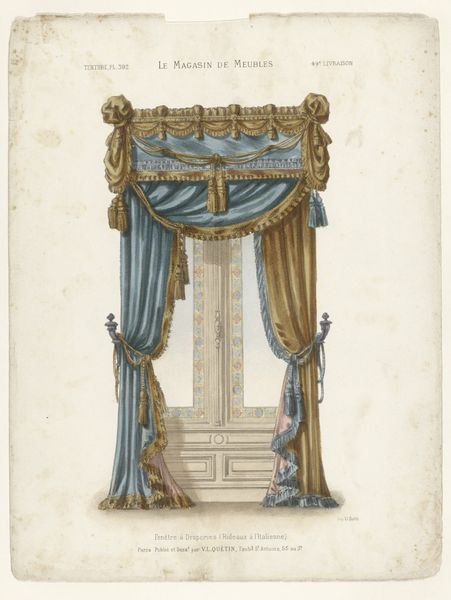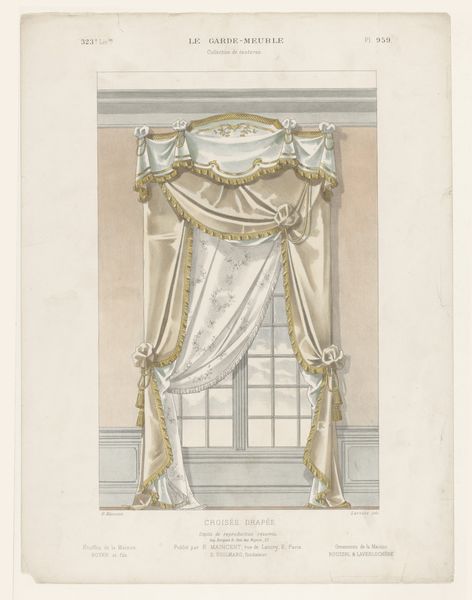
Copyright: Public Domain
Eugène Cicéri made this stage set design on paper, using graphite and watercolor. Though two dimensional, this drawing gives us a glimpse of 19th-century theater production. But, more than that, it is also a record of skilled labor. Look closely, and you can see the details that define the stage: the elaborate fringing, the heavy folds of fabric, and the classical ornamentation above. All of this would have been fabricated by different hands: weavers, seamstresses and woodworkers all contributing to the spectacle. The theater was a major engine of industry in its day, and while Cicéri's rendering is only on paper, it hints at the collaborative world of production that lay behind the performance. Designs such as this one remind us that what we see on stage always has a backstory in the workshops.
Comments
No comments
Be the first to comment and join the conversation on the ultimate creative platform.
